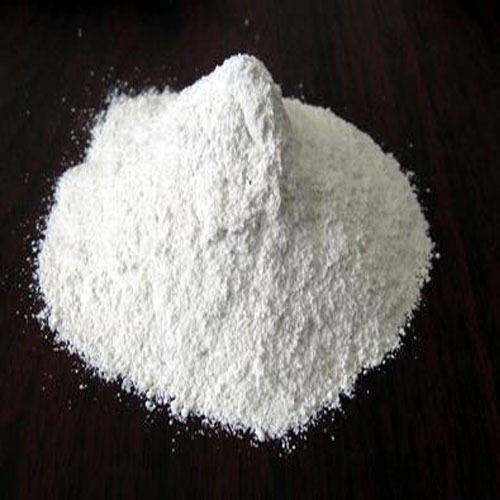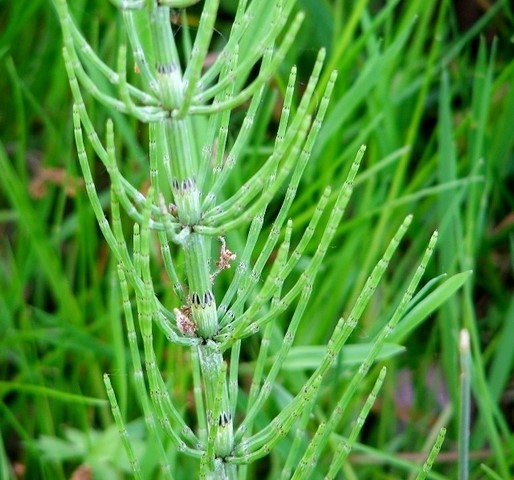Health Benefits Of Silica
Silicon (Si), known also as silica, is the second most available element after oxygen found in the earth’s crust. It is present in clay and sand, and rocks like quartz and granite.
Silica is present in the human body in the form of either a derivative of silanate or silicic acid. It is a vital trace mineral required by human body for strong hair, flexible joints, glowing skin, and strong bones. It also increases the overall benefits of vitamin D, glucosamine, and calcium.

In the past it was believed silica was just a trace mineral, and that we only needed a very small amount of it to maintain health. However, with further research, silica is now considered one of the top 12 elements necessary for life.
Silica’s importance in overall optimal health has been recognized for quite some time. As early as 1878, Louis Pasteur predicted that silica should be regarded as an important therapeutic substance for many health problems.
Silica has been proven to benefit the health of our bones, hair, skin and nails. Human hair contains 90 micrograms of silica per every gram. Only our bones contain more of this mineral, and that is the reason why we must make sure we have enough of silica to have healthy bones and hair.
According to one research review, “Orthosilicic acid (silica) is the form predominantly absorbed by humans and is found in numerous tissues including bone, tendons, aorta, liver and kidney. Deficiency induces deformities in skull and peripheral bones, poorly formed joints, reduced contents of cartilage, collagen, and disruption of mineral balance in the femur and vertebrae…In conclusion, many forms of silica exist in nature and myriad Health Benefits of silica.
HEALTH BENEFITS
Silica & Collagen
Collagen is the tough fibrous material that holds our tissues together. Many ageing health problems are a result of our inability to maintain adequate collagen production. Joint deterioration, cellulite, dry skin, brittle bones, weak teeth and gums, hardening of the arteries, or even inability to digest food properly are related to collagen deficiency. When we are younger, Silica levels in our body are high enough to maintain our skin, bones and joints are healthy and flexible. As we age, Silica levels decline and without adequate tissue levels of this mineral, we develop many of the symptoms of ageing including osteoarthritis, weakened digestion, cellulite, or wrinkled skin.
Hair
Silica is a key component when it comes to the health of the hair, and the efficiency of silica is well-documented and supported by numerous studies. Subjects who received silica supplements showed significant improvements. Silica strengthen hair, increasing the volume of the hair, improving density of the hair, eliminating the damaged skin cells on the scalp, and promoting collagen production.
Alopecia is caused by deficiency of silicon. This mineral encourages the growth of thick and healthy hair. It also increases the shining of hair.
Skin
Silica stimulates the rapid re-growth of damaged skin tissue. It is important for optimal synthesis of collagen and for activating the hydroxylation enzymes, improving strength and elasticity of the skin. Careful analyses of scientific research on silica leads to a clear conclusion that silica is absolutely essential for the body to create and maintain collagen.
Acne
Silica may help combat acne by removing toxins, boosting the production of collagen and rebuilding the connective tissues.
Cellulite
Deficiency of collagen in the body causes cellulite. Silica, by increasing production of collagen helps to prevent and treat cellulite.
Ageing
Gastrointestinal absorption of Si decreases with ageing.
Bone Health & Osteoporosis
There is no question that silica plays a very important role in bone formation and in bone health, and like Vitamin K2 and Vitamin D, Silica seems to be much more important for strong bones than Calcium.
Silica promotes a proper balance between calcium and magnesium in the body. This balance is one of the ways of preventing osteoporosis. There have been numerous studies demonstrating this benefit of dietary silicon.
Bone strengthening and support through enhanced calcium absorption Within bone, silica is the essential component making up the collagen matrix upon which calcium is deposited. This relationship is so fundamental that it is truly impossible to form bone without both calcium and silica. In fact, researchers are exploring the possibility that supplementation of silica, rather than calcium may be what is needed for maintaining strong bones.
Joint Health & Arthritis
Silica supplements can be helpful in improving the flexibility of the joints as they strengthen the connective tissues by building collagen.
Cardiovascular Health
Silica may help maintain healthy arteries and veins. This fact has been known since 1958 when it was found that arteriosclerotic artery walls showed excessively high levels of calcium and lower than normal levels of in silica.
Immune System
Silica has an alkalising effect that is important because poor dietary habits result in creating acidic environment in the body that affects the immune system and contributes to various illness. In addition, silica also supports immune system by helping manufacture antibodies, the special weapon our immune system uses to fight invaders.
Alzheimer’s
According to the research, silica from bamboo extract is not only beneficial for our hair, skin, nails or bones but may also help reduce the risk of Alzheimer’s disease by supporting removal of aluminium from the body.
POSSIBLE SILICA APPLICATIONS
Improve:
- Thin and weak hair and hair loss
- Brittle nails
- Dry skin
- Arthritis
- Weak connective tissue (joint, ligaments and muscles)
- Weak bones and teeth
- Cellulite
- Poor gum health
- Weak immunity
- Weak capillaries and blood vessels
- Inflammation in the veins (phlebitis, thrombophlebitis)
- Wounds and burns
- Aluminium accumulation
- Cardiovascular support
- Stomach and digestive disorders
SOURCES OF SILICA
Best Natural Sources
Bamboo extract is the richest known source of silica as it contains 70% organic silica and therefore is significantly higher source of silica than even horsetail herb which contains about 25% of this mineral.

After bamboo, horsetail herb continues to be one of the most abundant sources of silica in the plant kingdom. It is so rich in this mineral, that it was once used to polish metal in the Middle and Medieval ages, when it was nicknamed “scouring rush.” The high silica content made horsetail a popular ingredient in shampoos, skincare products, as well as in nutritional supplements.
In traditional medicine, the horsetail herb concoctions and other extracts has been used to treat fluid retention (including oedema), various inflammations, kidney stones, urinary tract infections, difficulties controlling urination, and other problems.

Food Sources
Apart from bamboo extract, horsetail and clay, much smaller concentrations of silica are found in certain foods including millet, whole oats, barley, quinoa, buckwheat, apples, cherries, almonds, seeds, potatoes (with skin), bananas, or green beans, raw cabbages, carrots, onions, and cucumbers. Refined foods, such as white flour products, are deprived of silica.
SUPPLEMENTATION
Although silica is the second most prevalent element on earth there is a need to supplement with for the following reasons: First of all, as we age, our body retains less and less silica. Secondly, silica does not seem to occur in sufficient amounts in the foods we consume, especially when we consume mostly refined products and avoid foods such as whole oats, millet, or barley. Refined and processed products have very little or no silica. As we get older, we need more silica to stay healthy, and it looks like we don’t get enough of it from dietary sources and water. For this reason supplementation seems to be a reasonable solution.
Bamboo Extract is the richest known source of silica as it contains 70% organic silica and therefore is significantly more potent source of silica than even horsetail herb, regarded as one of the highest natural sources of this mineral.
Written by Slawomir Gromadzki, MPH:
https://www.healthaid.co.uk/healthaid-blog/health-benefits-silica
SOURCES
J Nutr Health Aging. 2007 Mar-Apr;11(2):94-7. The chemistry of silica and its potential health benefits. Martin KR1. https://www.ncbi.nlm.nih.gov/pubmed/17435951
Chen F, Cole P, Wen L, et al. Estimates of trace element intakes in Chinese farmers. Community and International Nutrition. 1994;124:196–201.
Anasuya A, Bapurao S, Paranjape PK. Fluoride and silicon intake in normal and endemic fluorotic areas. Journal of Trace Elements in Medicine and Biology. 1996;10:149–155.
Sophie Gillette-Guyonnet, Sandrine Andrieu, Fatemeh Nourhashemi, Viviane de La Guéronnière, Hélène Grandjean and Bruno Vellas; Cognitive impairment and composition of drinking water in women: findings of the EPIDOS Study; American Journal of Clinical Nutrition, Vol. 81, No. 4, 897-902, April 2005.
Lemmo, E.Q. 1998 Silica. Keats Publishing
Bergna, H.E. 1994. The Colloidal Chemistry of Silica. American Chemical Society
Kaufmann, I 1992 Silica: The Amazing Gel. Canada: Alive
Carlisle, E.M. 1986. Silicon as an essential element in Animal Nutrition. John Wiley and Sons, Inc.
The Chemistry of Silica. by Ralph K. Iler. John Wiley and Sons, Inc., June 1979
http://www.eidon.com/silica_article/

